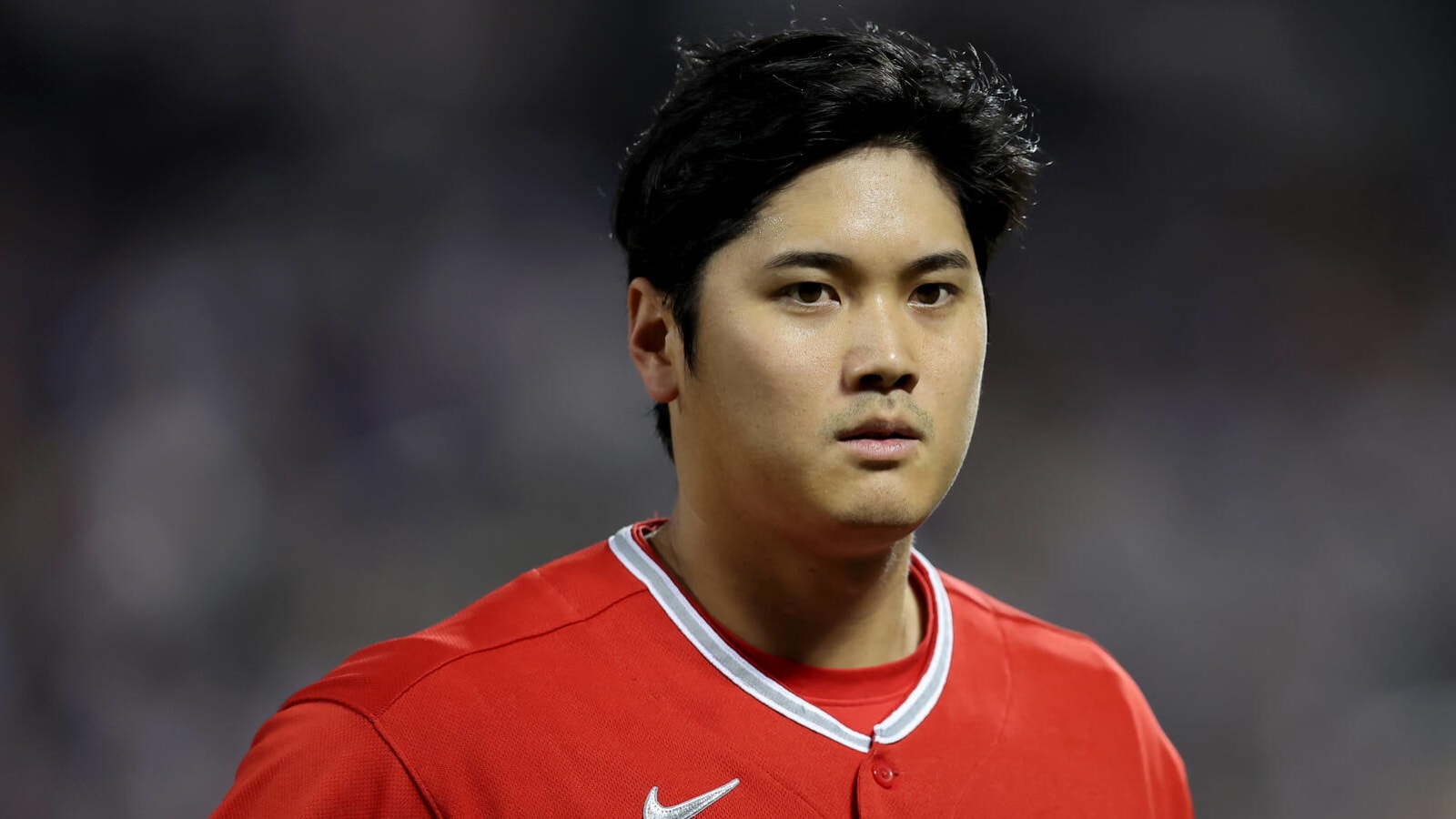
Shohei Ohtani’s landmark contract with the Dodgers has prompted endless discussion, debate and criticism due to the unprecedented scope of the deferrals it contains, but that’s far from the only fascinating wrinkle of the 10-year deal.
Sports Illustrated’s Tom Verducci reports that the contract contains language “that assures the club will make good on its promise to use the savings he created to build a competitive team around him.” Ohtani’s agent, Nez Balelo of CAA Sports, tells Verducci that Ohtani asked him early in the free-agent process about whether it was possible to defer the majority or entirety of his salary in order to give his club more present-day payroll flexibility.
As far as we at MLBTR can tell, that’s the first clause of its nature in any player contract. Further specifics of the clause and the manner in which it will be enforced remain unclear. The Dodgers’ reported pursuits of a trade involving Tyler Glasnow and Manuel Margot, plus their recent meeting with Yoshinobu Yamamoto, seem to signal that the team is indeed taking steps to satisfy that condition, though.
The luxury-tax hit associated with Ohtani’s contract is $46.06M, according to Verducci, which sits roughly in line with expectations at the outset of his free agency. But, the manner in which the contract was announced has created substantial criticism. It’s fair to wonder if, had the contract been announced as 10 years and $460M deferred with interest, it would have invited the same backlash as the initial announcement of a $700M deal … which was later reported to be 97% deferred.
The initial $700M figure looks good in a recruiting pitch for future CAA clients, but the league’s approximate $460M valuation of the net present value is a different story entirely. The MLBPA’s valuations are a bit lower yet; Jon Heyman of the New York Post notes that the union values the contract at $437,830,563, but the luxury-tax hit will be based upon the league’s calculations.
There’s been plenty of talk about the contract as a means of gaming the luxury-tax system, although the $46.06M CBT hit is in line with the league’s valuation of the deal. If anything, the contract is less about circumventing the luxury tax and more about artificially tamping down the team’s actual, bottom-line payrolls from 2024-33.
Unprecedented contractual language doesn’t stop with the competitive team clause. Ken Rosenthal of The Athletic reports that the contract states the following: “If specific change in Dodger personnel, player may opt out of contract at end of season the change occurs.”
The contract does not specify the person(s) that could prompt Ohtani to opt out of the contract. Given the massive slate of deferred money — Ohtani will be paid just $2M annually from 2024-33, with the remaining $680M paid out from 2034-43 — it’s difficult to see Ohtani opting out at any juncture, unless there’s language that allows a portion of those deferrals to be paid out in conjunction with the opt-out.
It’s technically feasible that if Ohtani is able to return to the mound in 2025, he could reestablish himself as a viable top-of-the-rotation starter and have even greater earning power than the ~$460M net present value of his current contract. However, if he’s only been paid out around 1-2% of the overall guarantee at the time of a theoretical opt-out opportunity, it’d still be difficult to walk away from the deal.
Then again, Ohtani showed with his original move to MLB (and to a lesser extent with the eye-popping nature of his current deferrals) that money is not necessarily his top priority in any contract. He’s also reportedly earning as much as $50M annually in terms of endorsements and other marketing opportunities, so the notion that he’d leave a staggering portion of his record contract on the table in order to pursue a return to free agency isn’t as far-fetched as it would be for many other players.
News of the (as we know it) unprecedented out clause in Ohtani’s contract will invite ample speculation. Fans on social media have already wondered about ownership changes, front office changes, managerial changes or perhaps even trades of star teammates like Mookie Betts and Freddie Freeman. With the contract itself not plainly spelling out the nature of the change, there’s no way of knowing the specific nature of personnel change that would trigger this right for Ohtani, however. The clause is further proof of the lengths to which the Dodgers — and presumably other teams — were willing to go in order to secure the two-way star’s generational talents.
Giants president of baseball operations Farhan Zaidi has already indicated that the terms of Ohtani’s contract with the Dodgers were proposed by Ohtani and his agents, and that the Giants were comfortable effectively matching them. Presumably if Ohtani’s camp included the stipulations about investing the present-day savings and the conditional out clause in the terms with the Dodgers, those factors were also present in discussions with the Giants, Blue Jays and other finalists for his services.
More must-reads:
- Dodgers to part ways with six-time All-Star amid Shohei Ohtani addition
- Is Shohei Ohtani just the tip of the iceberg for the Dodgers and Japanese players?
- The '200-passing yards in first 20 NFL games' quiz
Breaking News
Trending News
Customize Your Newsletter
 +
+
Get the latest news and rumors, customized to your favorite sports and teams. Emailed daily. Always free!








